|
Bitter rubberweed (Hymenoxys oderata) This is a bumper crop year for rubberweed on the Jornada. A known poisonous plant for livestock and an increaser with grazing.
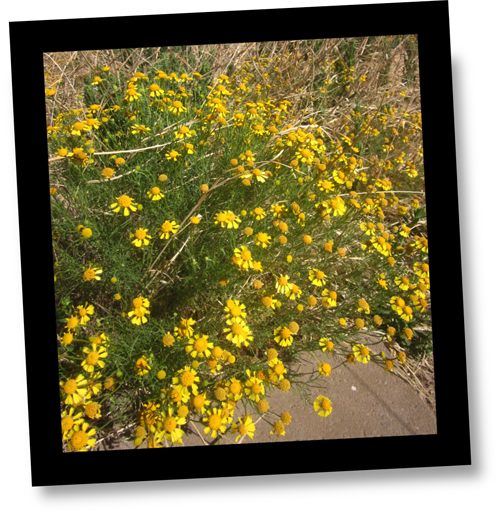
|
|
|
Blackfoot daisy (Melampodium leucanthum) The “blackfoot” refers to the seed bract which turns black with maturity, according to Diggs, et al., 1999. A showy flower and a great addition for a drought tolerant garden.
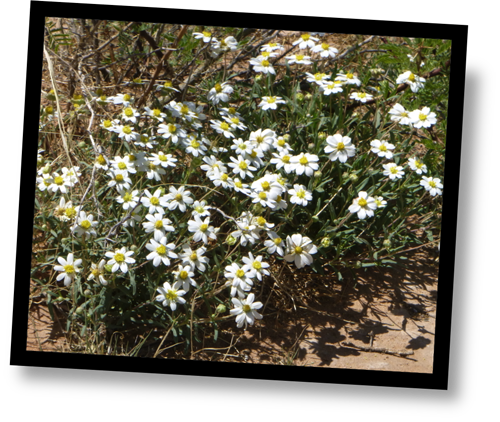
|
Bristly nama, Sand bells (Nama hispidum) Flowers are bell-shaped and have five rounded lobes and a white-ringed, yellow center. The pinkish-violet color of this mat forming plant is a welcome relief from the common yellows and whites of other Chihuahuan dicot flowers. Leaves are densely hairy, plump-looking, deeply veined, and have rolled-under margin.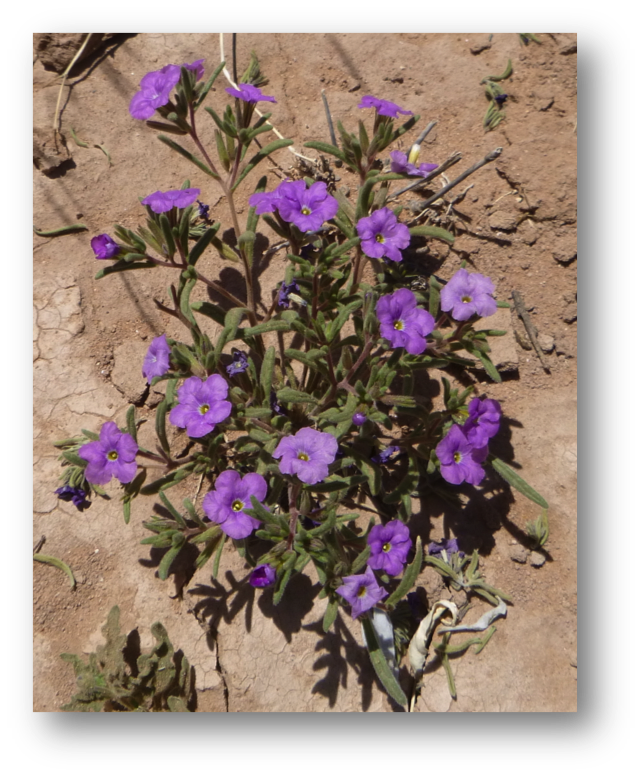
|
|
|
Chihuahuan flax (Linum vernale) A very slender, erect plant with yellow-orange, bowl-shaped flowers, each with a maroon center.

|
|
Collegeflower (Hymenopappus flavescens var. canotomentosus) As the name suggests, this plant was used for herbal teas. As the flower dries the seed heads have a marked “t” shape.
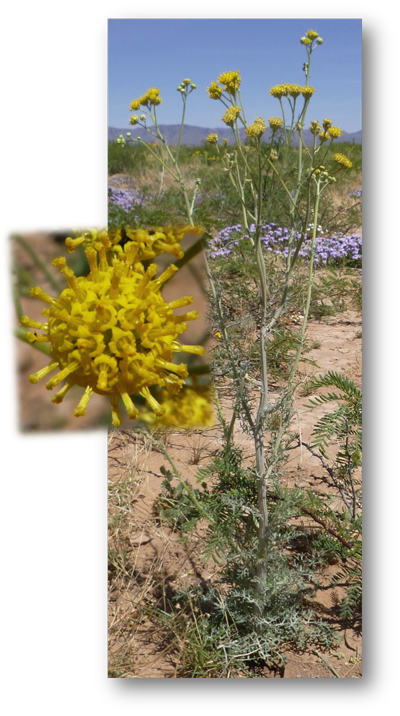
|
|
|
Creosotebush (Larrea tridentata) The waxy coating on the evergreen leaves helps to retard evaporation. It gives off a pleasant and distinct odor after a desert rain. Bees are an important pollinator, and one species of grasshopper feeds exclusively on it.
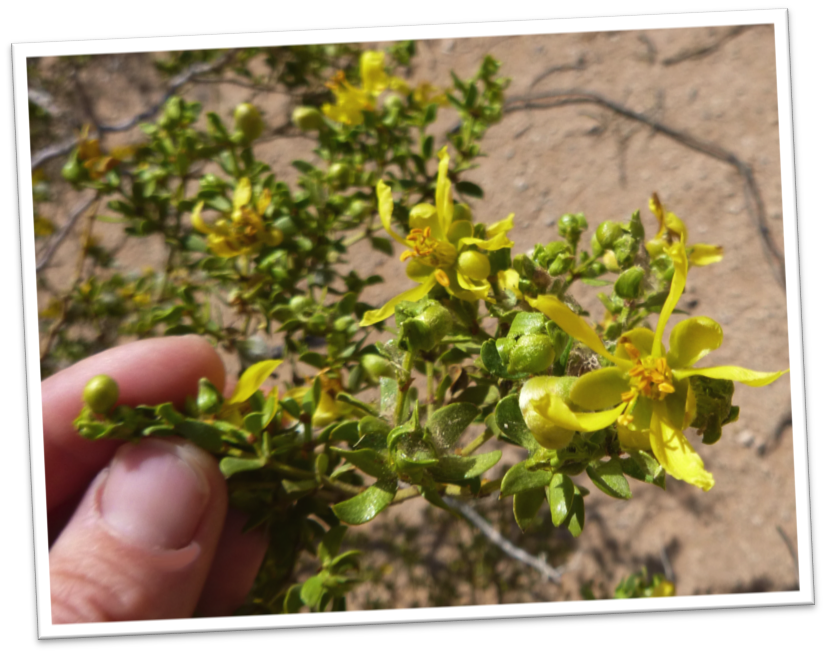
|
|
Copper globemallow (Sphaeralcea angustifolia) Recently discovered as an anti-inflammatory for chronic inflammation. Mallows have a distinct showy flower with fused stamens forming a tube around the pistil.

|
|
|
Desert marigold (Baileya multiradiata) A short lived perennial, desert marigold has a long blooming period making it an attractive addition to any garden.
|
|
Desert holly (Acourtia nana) These flowers are very fragrant. The leaves dry and make a sound much like a rattlesnake’s rattle.
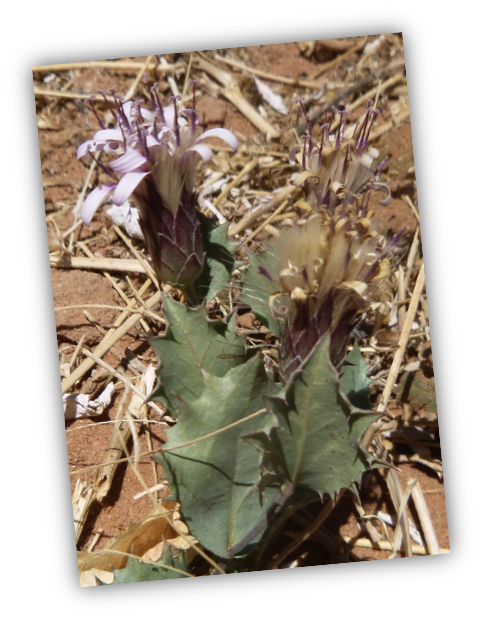
|
|
|
Firewheel, Indian blanket (Gaillardia pulchella) Although some species of this flower are entirely yellow like this one, most have flower heads with a red center and a yellow outer band, each with three teeth at the broad end. Thrives in heat and full sun in well drained soils. 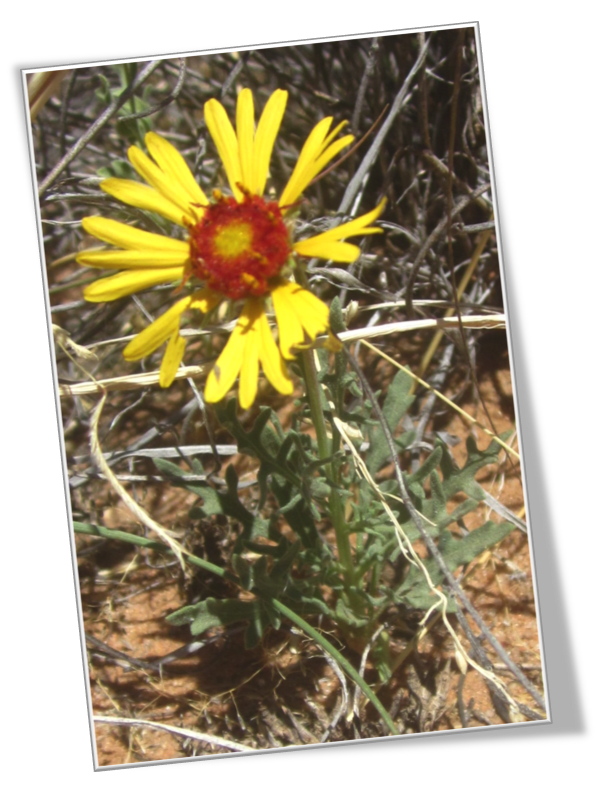
|
|
Fendler’s bladderpod (Physaria fendleri) The silvery-gray foliage is due to tiny, dense, starlike scales, or hairs covering plant surfaces. It is often cultivated for its high seed oil content.
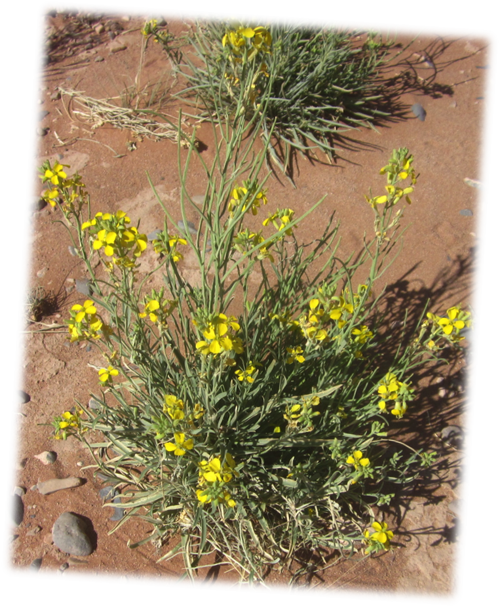
|
|
|
Hairy five eyes (Chamaesaracha sordida) Often found in more disturbed areas, hairy five eyes often has a “dirty” appearance from sand collecting in the glandular pubescent leaves.
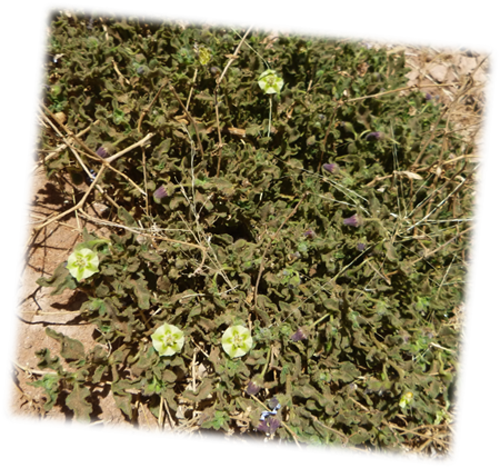
|
|
Four-wing saltbush (Atriplex canescens) A drought and alkaline tolerant species. Every part of this shrub is edible for humans as well as wild and domestic animals. This species of shrub has male flowers on one plant and female on another (dioecious). Here you see a cluster of male flowers on the non-fruiting male plant.
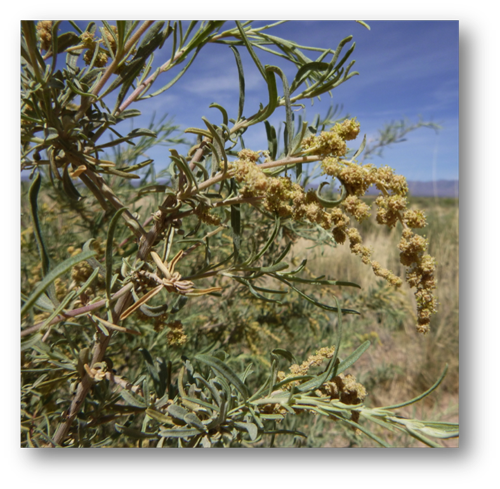
|
|
|
Honey mesquite (Prosopis glandulosa) Spines cover the branches and leaves are alternate and bipinnate. It is an important wildlife plant, with many species eating the seeds, others taking the nectar, and others using it for browse or shelter.
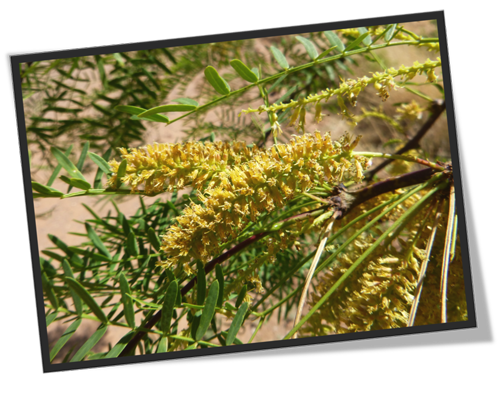
|
|
Hairy seed bahia (Bahia absinthiifolia) A pretty little perennial flower in the Aster family.
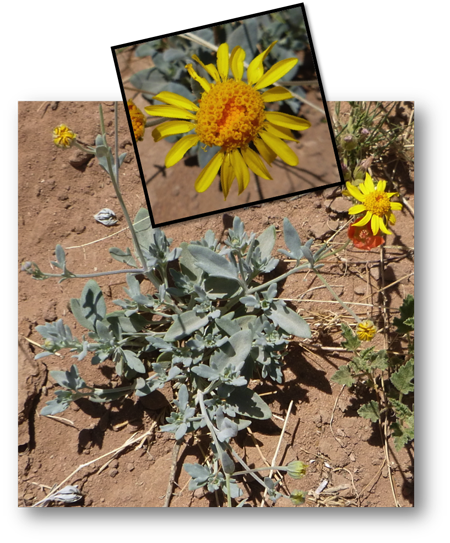
|
|
|
Leatherweed (Croton pottsii) This plant was traditionally cooked as a type of spinach. A common species found in the Chihuahuan desert.
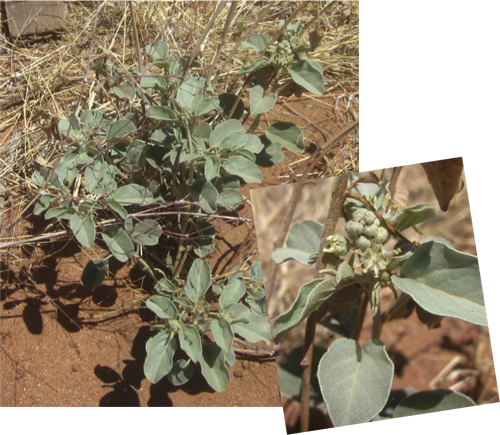
|
Mesa pepperwort (Lepidium alyssoides) Flower clusters are at the ends of branches, with long-pediceled silicles individually attached to the stem directly below.
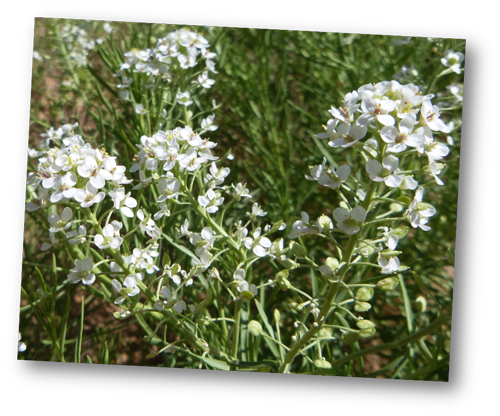
|
|
|
Plains fleabane (Erigeron modestus) Traditionally dried to repel fleas.
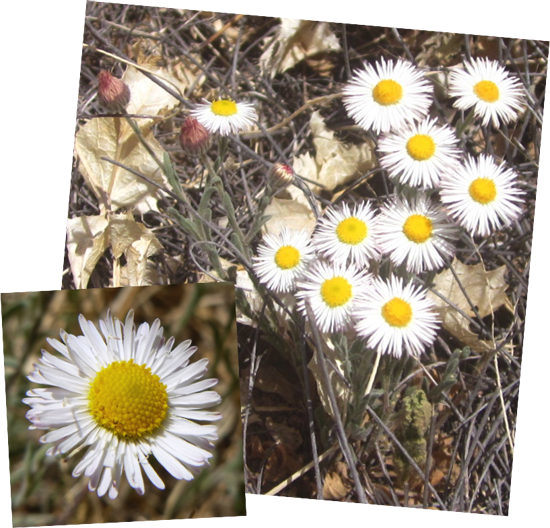
|
|
Prairie evening primrose (Oenethera albicaulus) Stem leaves completely pinnate and basal leaves broad, undivided, and spoonlike. Native Americans had several medicinal uses for the various primroses, including preparing a tea to treat kidney pains.
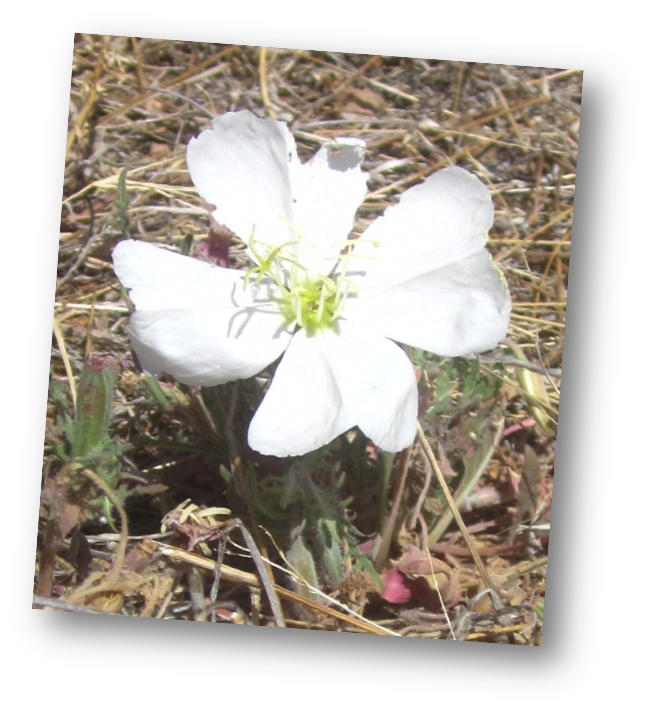
|
|
|
Prickly pear cactus, Cactus apple (Opuntia engelmannii) Flowering is in April and May, with each bloom lasting only one day, opening at about 8 AM and closing eight hours later. The edible fruit is a prickly pear, maturing purple, and very seedy; many Native Americans would dry out the seeds and grind them into pastry flour.
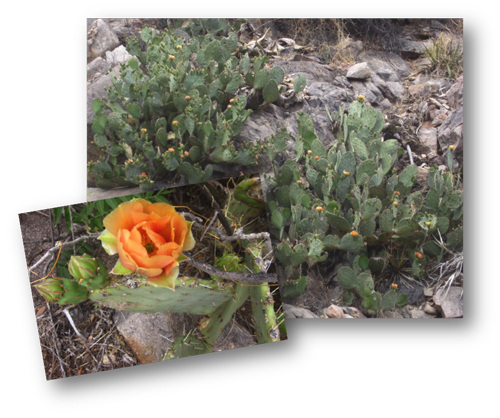
|
|
Pricklypoppy (Argemone hispida) A weedy species making a spectacular appearance along roads this year. The milky sap was once used to treat cataracts.
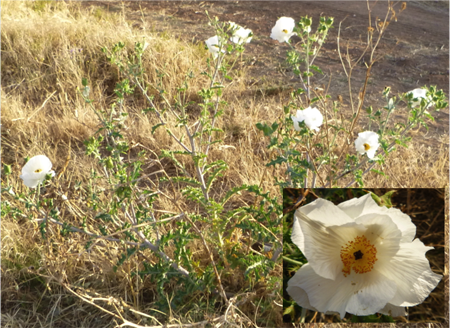 |
|
|
Purple prairie verbena, Dakota mock vervain (Glandularia bipinnatifida) Gently rounded clusters of bilaterally symmetrical flowers bloom atop stems with highly divided leaves. This plant often forms brilliant displays of pink or light purple, covering acres of ground.
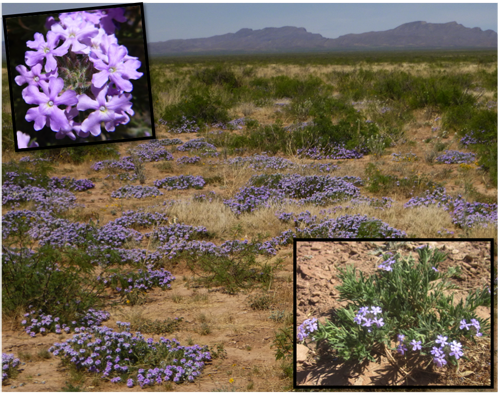
|
|
Rattlesnake weed (Chamaesyce albomarginata) This is one of the prettier species of this genus. The “flowers” are showier and the heart shaped leaves larger with a glossy sheen. The plant was traditionally used for snakebites.
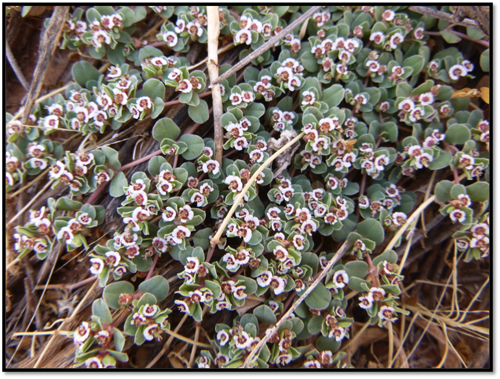
|
|
|
Scarlet Hedgehog cactus (Echinocereus coccineus) Long, curly spines with white, felt-like hairs at base of larger spines. A thick nectar chamber and many thread pink stamens at the center of the corolla attract hummingbirds for pollination. 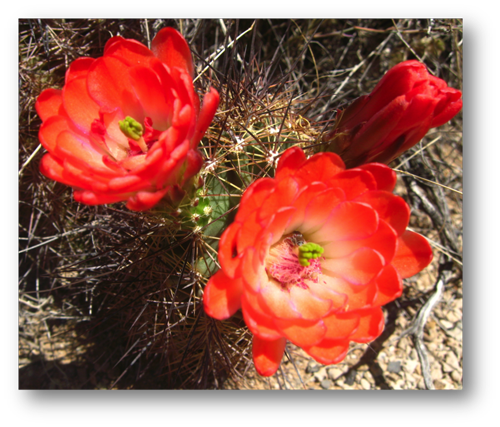 |
Silverleaf nightshade (Solanum elaeagnifolium)

|
|
|
Trailing krameria, Three fans (Krameria lanceolata) Prostrate stems and irregularly arranged, dark wine red petals, four above and one below.
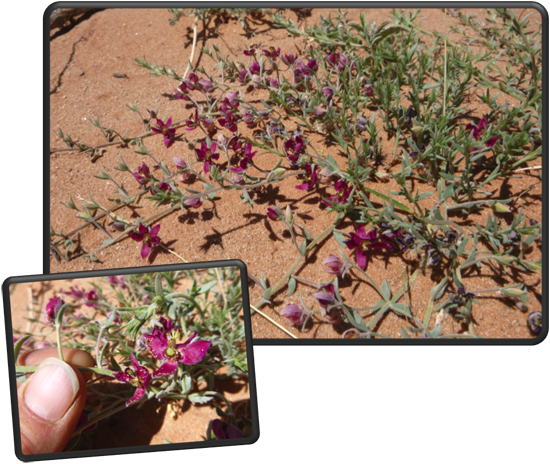 |
|
Twinleaf senna (Senna bauhinioides) Leaves are paired and gray-green.
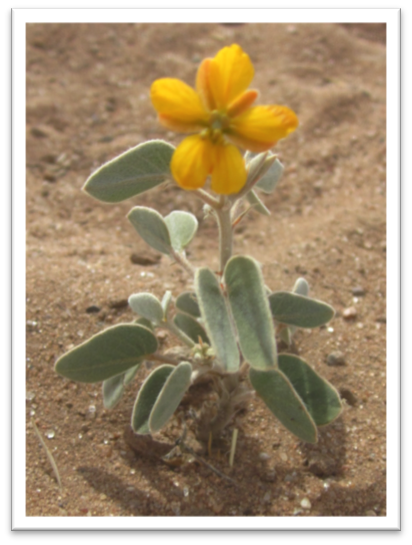
|
|
|
|
Photos and plant identification by Kirsten Romig and Michelle Mattocks, Jornada Experimental Range |
|